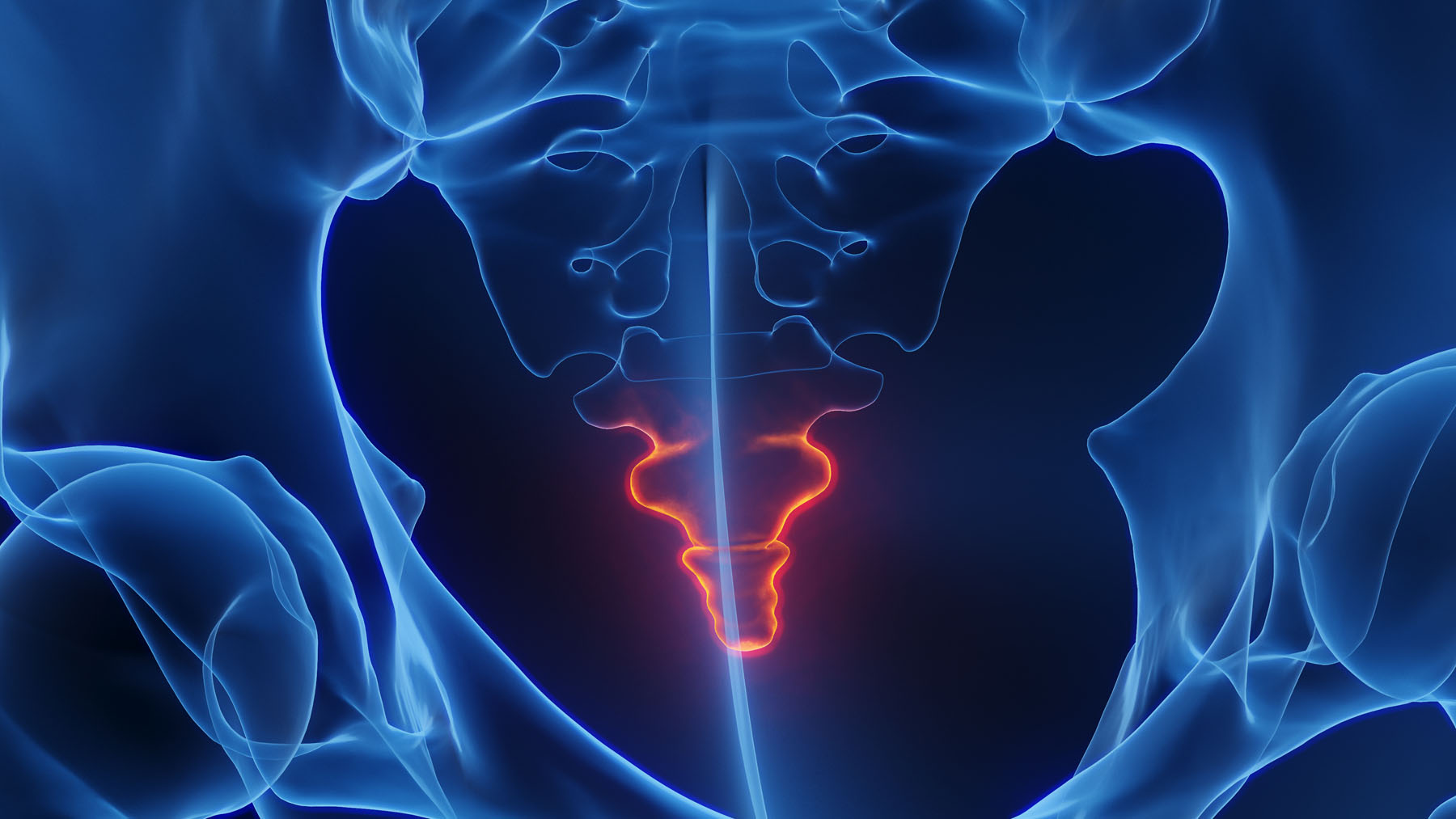A ganglion impar block offers a potential solution for persistent pain in the lower pelvis and groin. This procedure involves injecting medication near the ganglion impar, a nerve cluster located just in front of the sacrum or sacrococcygeal junction at the base of the spine.
By targeting this area, which serves as a hub for nerves transmitting pain signals from various regions such as the lower rectum, anal region, urethra, vagina, vulva, scrotum, and tailbone, the block aims to interrupt the transmission of pain signals to the brain.
During the procedure, a healthcare provider carefully inserts a needle into the targeted area near the tailbone, guided by imaging techniques. Once in position, medication is administered to help block the pain signals originating from the affected regions.
This approach can provide relief for individuals experiencing chronic pelvic or groin pain, offering a potential avenue for managing their condition and improving quality of life.
Table of Contents
- What Are Ganglion of Impar Block Injections?
- What Do Ganglion of Impar Block Injections Treat?
- How Do Ganglion of Impar Block Injections Work to Alleviate Chronic Pain?
- Preparing for Ganglion Impar Block Injections
- After Getting Ganglion Impar Block Injections (Follow-Up)
- Risks of Ganglion of Impar Block Injections
- Finding a Doctor Who Performs Ganglion of Impar Block Injections Near You
- Ganglion of Impar Block Injections at Persistent Pain Solutions
What Are Ganglion of Impar Block Injections?
A ganglion impar block or ganglion impar block injections are a medical procedure used to relieve chronic pelvic or rectal pain. The ganglion impar is a bundle of nerves located at the base of the coccyx (tailbone), and it is responsible for transmitting pain signals from the pelvic organs, perineum, and distal rectum to the brain.
During a ganglion impar block, a local anaesthetic, often combined with a corticosteroid, is injected near the ganglion impar to temporarily block the transmission of pain signals. This can provide relief for conditions such as chronic pelvic pain, coccydynia (tailbone pain), perineal pain, and pain associated with certain cancers or inflammatory conditions affecting the pelvic region.
The procedure is typically performed under fluoroscopic (X-ray) guidance to ensure accurate placement of the injection needle near the ganglion impar. If successful, the block can provide significant pain relief for a variable duration, depending on the individual and the underlying cause of the pain. It may be used as a diagnostic tool to determine if the ganglion impar is the source of the pain and as a therapeutic intervention to manage chronic pain.
What Do Ganglion of Impar Block Injections Treat?
Ganglion impar block injections are primarily used to treat persistent pain in the lower pelvis, groin, and related areas.
Some of the specific conditions and symptoms that may be treated with ganglion impar block injections include:
- Chronic Pelvic Pain Syndrome. This includes pain in the pelvic region that lasts for six months or longer, often without an identifiable cause.
- Coccydynia (Tailbone Pain). Ganglion impar block injections can help alleviate pain originating from the coccyx (tailbone) region.
- Pelvic Cancer Pain. Ganglion impar blocks may be used as part of palliative care to relieve pain associated with pelvic tumors or metastases.
- Chronic Perineal Pain. This refers to persistent pain in the area between the anus and genitals, which can be caused by various conditions such as nerve damage, inflammation, or trauma.
- Chronic Proctalgia. Ganglion impar block injections can help manage chronic rectal pain that doesn’t have an obvious cause.
- Pain associated with Endometriosis. Endometriosis can cause pelvic pain, and ganglion impar blocks may be used as part of a multidisciplinary approach to managing this condition.
- Pain following Pelvic Surgery or Trauma. Ganglion impar block injections may be used to manage persistent pain that develops after pelvic surgery or injury.
Overall, ganglion impar block injections are employed to provide relief from chronic or persistent pain in the lower pelvic and groin regions by blocking the transmission of pain signals from the ganglion impar to the brain.
How Do Ganglion of Impar Block Injections Work to Alleviate Chronic Pain?
Ganglion impar block injections alleviate chronic pain by interrupting the transmission of pain signals from the ganglion impar to the brain. Here’s how the procedure works:
- Identification of Pain Source. Chronic pain in the lower pelvic or groin region often originates from nerve signals transmitted through the ganglion impar, a cluster of nerves located near the base of the spine.
- Procedure Setup. The patient is positioned appropriately for the procedure, often lying on their stomach. The area around the tailbone is cleaned and sterilised.
- Guided Injection. Using fluoroscopy (X-ray guidance) or ultrasound imaging, a healthcare provider precisely guides a needle to the area near the ganglion impar.
- Medication Injection. Once the needle is in place, a mixture of local anaesthetic (such as lignocaine or bupivacaine) and sometimes a corticosteroid (such as cortisone) is injected into the area surrounding the ganglion impar.
- Blocking Pain Signals. The local anaesthetic temporarily blocks the transmission of pain signals from the ganglion impar to the brain. This provides immediate pain relief, often within minutes of the injection. The corticosteroid, if included, helps reduce inflammation in the area, providing longer-lasting relief.
- Assessment. After the injection, the patient’s response is monitored to evaluate the effectiveness of the block. This may involve assessing changes in pain levels or functional improvement.
- Recovery. Following the procedure, patients may experience immediate pain relief or a gradual reduction in pain over the next few hours. They are typically observed for a short period before being discharged.
By blocking the transmission of pain signals at the ganglion impar, these injections provide temporary or sometimes prolonged relief from chronic pelvic or groyne pain.
The duration and effectiveness of pain relief can vary among individuals, and multiple injections may be needed for sustained benefit. Additionally, ganglion impar block injections are often part of a comprehensive pain management plan that may include physical therapy, medications, and other interventions.
Preparing for Ganglion Impar Block Injections
We advise patients to refrain from undergoing any additional medical procedures within 48 hours before or after receiving a ganglion impar block. Additionally, it is important to abstain from consuming food or liquids prior to the procedure.
Prior to your appointment, please inform us if:
- You are currently taking antibiotics.
- You have a pacemaker or defibrillator.
- You have any allergies.
- You have diabetes.
- You are feeling unwell, as we may need to reschedule your procedure.
You will also need to arrange transportation to and from your appointment, as driving yourself is not advised within the 24-hour period following the procedure.
After Getting Ganglion Impar Block Injections (Follow-Up)
You are free to return home within an hour or so following your procedure. There are no specific restrictions on your day-to-day activities. However, it’s advisable to prioritise rest and engage in gentle activities during the initial 24 hours post-procedure.
Occasionally, you may experience some discomfort at the injection site.
It is normal for pain to slightly increase after the local anaesthetic wears off. Relief typically begins within 48 hours as the steroid medication takes effect.
The effectiveness of a ganglion impar block can last anywhere from one to six months following the procedure. Please feel free to reach out to us with any questions or concerns during your recovery period.
Risks of Ganglion of Impar Block Injections
While ganglion impar block injections are generally considered safe, there are some potential risks and side effects associated with the procedure. These risks include but are not limited to:
- Bleeding or Bruising. Some bleeding or bruising may occur at the injection site, especially if you are taking blood-thinning medications.
- Infection: Although rare, there is a risk of infection at the injection site. Proper sterile technique during the procedure helps minimise this risk.
- Nerve Damage. There is a small risk of injury to nearby nerves or tissues during the insertion of the needle. This could potentially cause temporary or, very rarely, permanent nerve damage.
- Allergic Reaction. Allergic reactions to the medications used in the injection, such as local anaesthetics or corticosteroids, are possible but uncommon.
- Pain or Discomfort. Some patients may experience temporary pain or discomfort at the injection site or in the surrounding area following the procedure.
- Temporary Increase in Pain. In some cases, patients may experience a temporary increase in pain before experiencing the desired pain relief. This is usually due to the initial irritation caused by the injection and typically subsides within a few days.
- Failure to Relieve Pain. Ganglion impar block injections may not always provide the desired pain relief, especially in cases where the underlying cause of the pain is complex or multifactorial.
It is essential to discuss the potential risks and benefits of ganglion impar block injections with your pain management doctor before undergoing the procedure. They can provide personalised guidance based on your specific medical history and condition. Additionally, ensuring that the ganglion impar block procedure is performed by an experienced and skilled physician can help minimise the risk of complications.
Finding a Doctor Who Performs Ganglion of Impar Block Injections Near You
If you are suffering from chronic pelvic pain, pain associated with endometriosis, chronic proctalgia, or other pain associated with pelvic cancers or trauma, then a pain specialist who can perform a ganglion impar nerve block injection may be able to provide some relief.
Asking your general practitioner for a referral to a pain management doctor who offers ganglion impar nerve block injections or similar treatments is the first step towards alleviating chronic pain in your pelvic region; you can also speak to family members, friends, or support groups (both online and in real life) for recommendations from those who have overcome with similar challenges.
Ganglion of Impar Block Injections at Persistent Pain Solutions
Dr Meena Mittal and her team at Persistent Pain Solutions provide ganglion of impar block injections to help alleviate chronic originating in the pelvic region of the body.
Ganglion of impar block injections play an important role in managing chronic or persistent pain in the lower pelvic, perineal, or rectal regions by targeting the ganglion impar and interrupting the transmission of pain signals to the brain.
However, the effectiveness of these blocks can vary, and multiple injections may be needed for sustained pain relief. It is essential to discuss the potential benefits and risks of ganglion impar blocks with your healthcare teams to determine if this type of treatment is appropriate for your needs.

Find a Persistent Pain Solutions Location Near You
Leader in Personalised Care, Integrative Pain Medicine, & Pain Management Intervention.
Pain Treatments We Offer in Melbourne, Victoria

Don’t Miss an Update
Join our newsletter to learn more about our staff, patients, and communities in the know on all of the recent news, events, and announcements for Persistent Pain Solutions.
